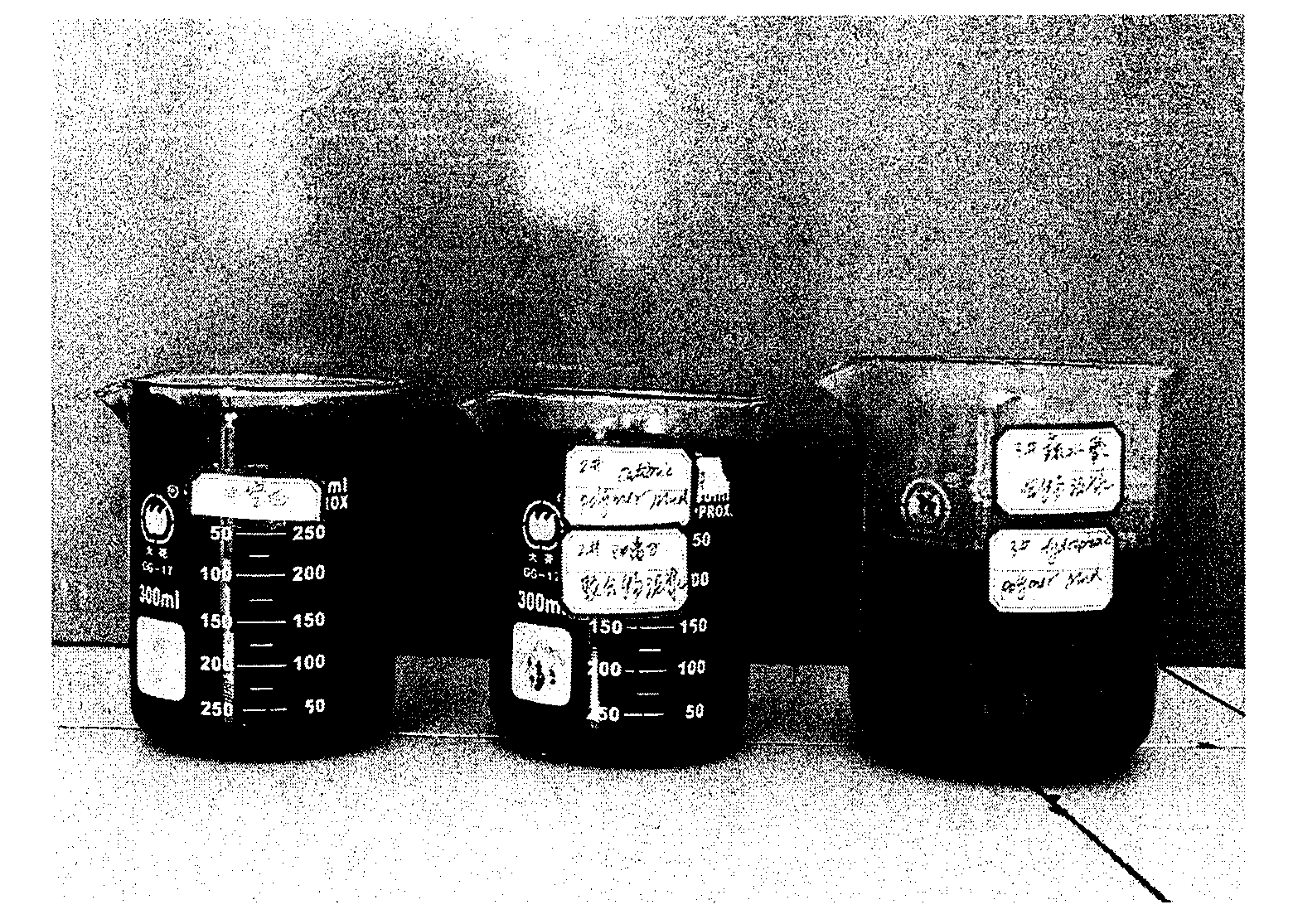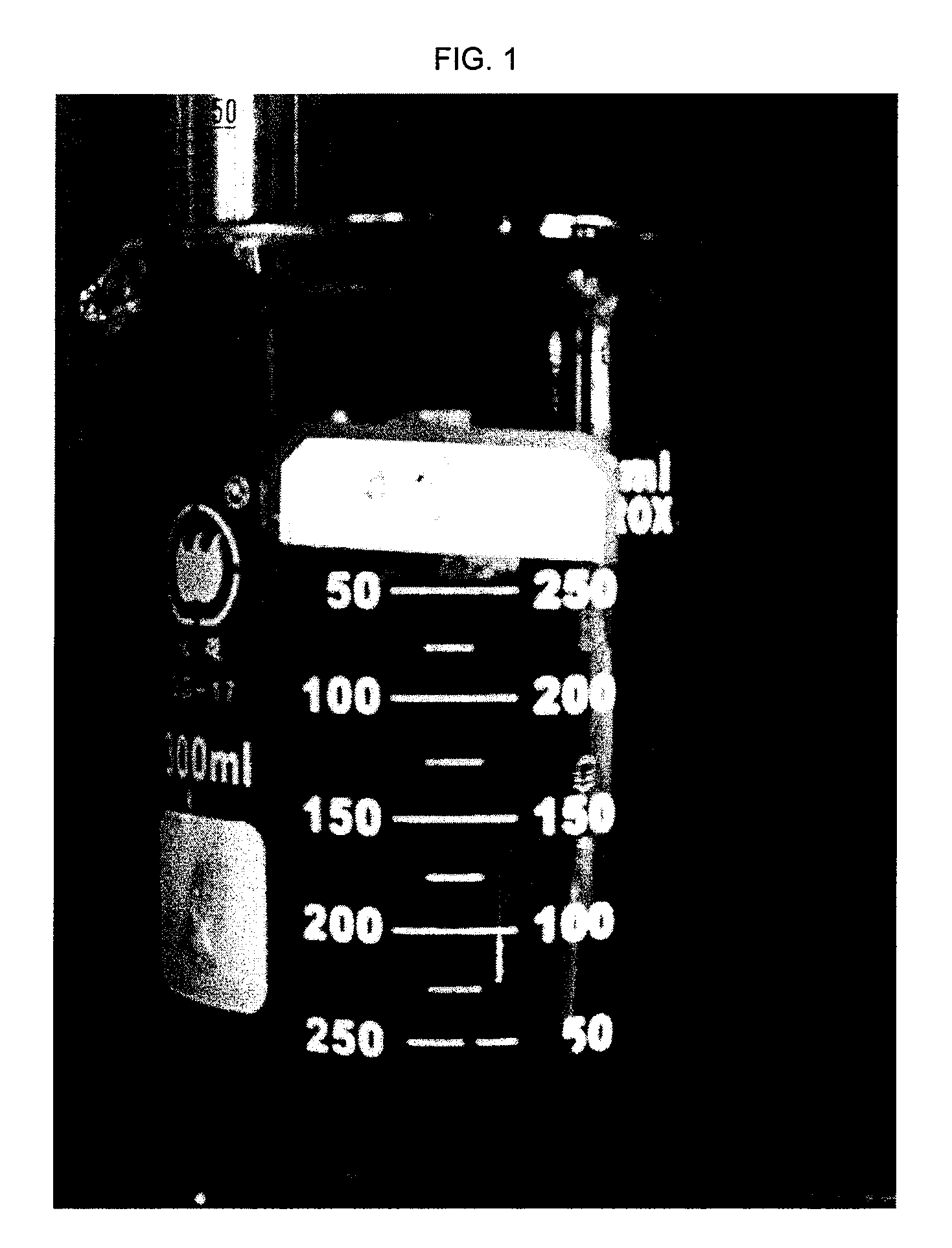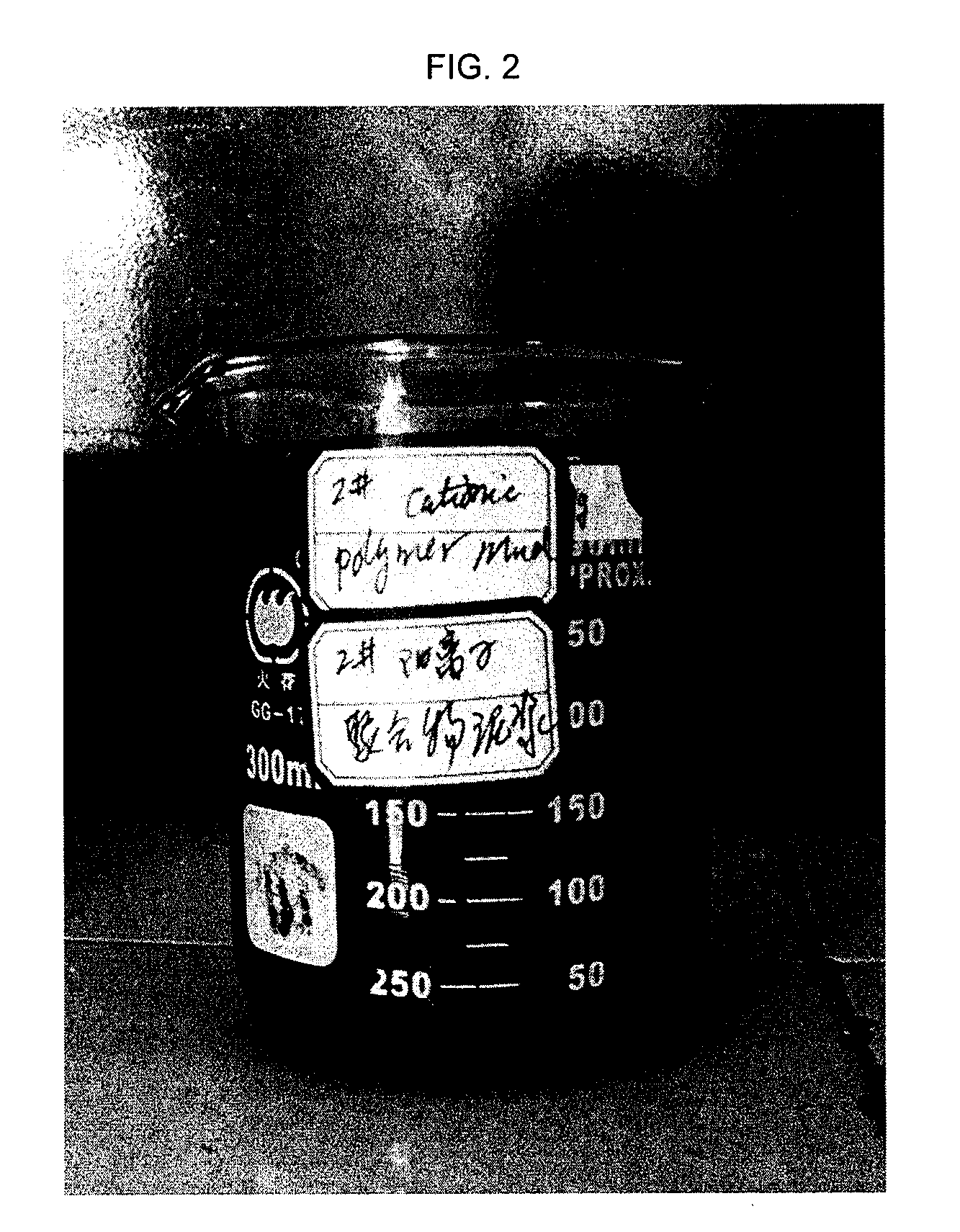Drilling fluid composition comprising hydrophobically associating polymers and methods of use thereof
a technology of hydrophobic association and fluid composition, which is applied in the direction of drilling composition, borehole/well accessories, petroleum industry, etc., can solve the problems of bitumen sticking to the drilling components, high torque and drag, and the problem of bitumen accretion or sticking is known to occur, so as to prevent the dispersal of bitumen, the effect of less sticking
- Summary
- Abstract
- Description
- Claims
- Application Information
AI Technical Summary
Benefits of technology
Problems solved by technology
Method used
Image
Examples
example 1
Prior Art Composition Comprising Anionic Polymer
[0195]To tap water was added 20 kg / m3 of bentonite, 0.5 kg / m3 of soda ash (Na2CO3), 2 kg / m3 of polyanionic cellulose regular (PAC R), 1 kg / m3 of xanthan gum, 1 kg / m3 of polyanionic cellulose low viscosity (PAC LV) and 6 kg / m3 of drilling grade starch. This mixture was then mixed using a Hamilton Beach mixer for 20 minutes, at which point 80 kg / m3 of bitumen was added and further mixed for 20 minutes. The mixture was then left to sit at 11° C. for 16 hours. As can be seen in FIG. 1, this prior art drilling fluid composition comprising an anionic polymer is not able to encapsulate the bitumen.
example 2
Prior Art Composition Comprising Cationic Polymer
[0196]To tap water was added 20 kg / m3 of bentonite, 0.5 kg / m3 of soda ash (Na2CO3), 5 kg / m3 of cationic polymer (KT11-4: copolymer of acrylamide and 2-methacryloyloxyethyltri-methylammonium chloride), 1 kg / m3 of xanthan gum, 3 kg / m3 of polyanionic cellulose low viscosity (PAC LV) and 6 kg / m3 of drilling grade starch. This mixture was then mixed using a Hamilton Beach mixer for 20 minutes, at which point 80 kg / m3 of bitumen was added and further mixed for 20 minutes. The mixture was then left to sit at 11° C. for 16 hours. As can be seen in FIG. 2, this prior art drilling fluid composition comprising a cationic polymer is not able to encapsulate the bitumen.
example 3
[0197]To tap water was added 20 kg / m3 of bentonite, 0.5 kg / m3 of soda ash (Na2CO3), 5 kg / m3 of hydrophobic polymer (BT 1217), 1 kg / m3 of xanthan gum, 3 kg / m3 of polyanionic cellulose low viscosity (PAC LV) and 6 kg / m3 of drilling grade starch. This mixture was then mixed using a Hamilton Beach mixer for 20 minutes, at which point 80 kg / m3 of bitumen was added and further mixed for 20 minutes. The mixture was then left to sit at 11° C. for 18 hours. As can be seen in FIG. 3, this drilling fluid composition comprising a hydrophobic polymer is able to encapsulate the bitumen as illustrated by the lighter colour of the mixture. Also, as seen in FIG. 4, the third beaker contains the hydrophobic polymer which results in the encapsulation of the bitumen, demonstrated by the lighter colour of the mixture in the third beaker compared to the first and second beakers.
PUM
| Property | Measurement | Unit |
|---|---|---|
| concentration | aaaaa | aaaaa |
| concentration | aaaaa | aaaaa |
| concentration | aaaaa | aaaaa |
Abstract
Description
Claims
Application Information
 Login to View More
Login to View More - R&D
- Intellectual Property
- Life Sciences
- Materials
- Tech Scout
- Unparalleled Data Quality
- Higher Quality Content
- 60% Fewer Hallucinations
Browse by: Latest US Patents, China's latest patents, Technical Efficacy Thesaurus, Application Domain, Technology Topic, Popular Technical Reports.
© 2025 PatSnap. All rights reserved.Legal|Privacy policy|Modern Slavery Act Transparency Statement|Sitemap|About US| Contact US: help@patsnap.com



